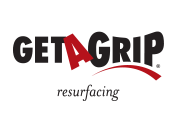Measure and Monitor
March 2015 by Sharon Dillard
 The beginning of the year is a time to look to the past and decide what one wants in the future. Many business people do that in January, but I prefer to do it in the spring, when a feeling of renewal after the long winter brings excitement for the future. So I ask myself, what am I willing to do, and how am I going to reach my goals?
The beginning of the year is a time to look to the past and decide what one wants in the future. Many business people do that in January, but I prefer to do it in the spring, when a feeling of renewal after the long winter brings excitement for the future. So I ask myself, what am I willing to do, and how am I going to reach my goals?
Measuring and monitoring are critical, necessary tools you need in order to reach your goals. Any planning we’ve done previously won’t have a chance of succeeding if we can’t judge know how far we’ve come, or how far we have to go. If we don’t know where our ideal end point is, we can’t know which road will take us there. On the other hand, when we do know where to go, we can set up milestones and monitor our progress along the path. Here’s a different way to think about it:
We measure, we achieve. A simple system that is actually implemented is better than a complex one that is unused, right? So don’t think you need some complex computer based contact management software to track appointments, numbers of leads called or proposals sent. Use whatever tools get the job done. There are very successful business people who get great results using an Excel spreadsheet, or even plain index cards.
Pick measurable items. What all should you be measuring and monitoring? Some examples from the sales world include numbers of sales meetings you have; the kinds of meetings they were (first time, follow up visits, etc.); the number of leads and /or prospects in your sales pipeline; the number of proposals you send/estimates you write; number of proposals/estimates that turn into paying clients; the value of the clients; as well as the locations and kinds of clients they are.
If customer service improvement is your goal, you could measure and monitor the length of customer calls, ask your customer what they think about your service via an electronic survey or by contacting them via letter or on the telephone, set up a customer service training program for front line employees – those who have immediate contact with customers.
The point is to measure and monitor the data that is most meaningful to your business. For some businesses, it’s the number of widgets made. For others it’s the dollar amount of each sale. For still others, it’s how long a customer stays with you.
Make it a point to actually review your data. You’ve got some data, but are you hitting your targets? When you look at a month, quarter or year, what does it tell you compared to prior time periods? Are there areas you’ve neglected? Or has one of your target items exploded such that you’re barely keeping up? That’s a good problem to have.
Adjust your targets accordingly. Now that you know how well you’re doing compared to your goals, you can adjust your methods to reach them, or adjust your goals if you’re finding they weren’t the most reasonable to begin with.
So ask yourself if and what you’re measuring and monitoring. Are you doing these things now? If not, why not? Is it fear of knowing the answers? Of needing to change the way you do things? Of needing to make hard decisions for the success of your business?
If you are doing well, how could you improve your process to do even better? What would it take to get the discipline you need to really be successful?
Either way, you won’t know if you’ve arrived unless you know where you’re going. Just sayin’.
Published: New Mexico Apartment News Magazine – March/April issue 2015
Sharon Dillard is the award-winning CEO of Get A Grip Inc., a national franchise kitchen and bathroom resurfacing company based in Albuquerque, New Mexico.














Recent Comments